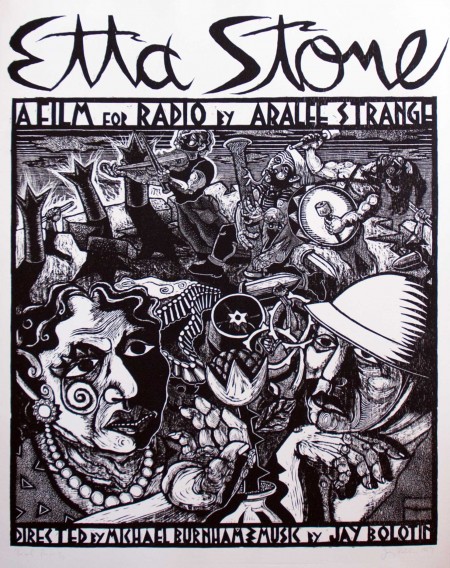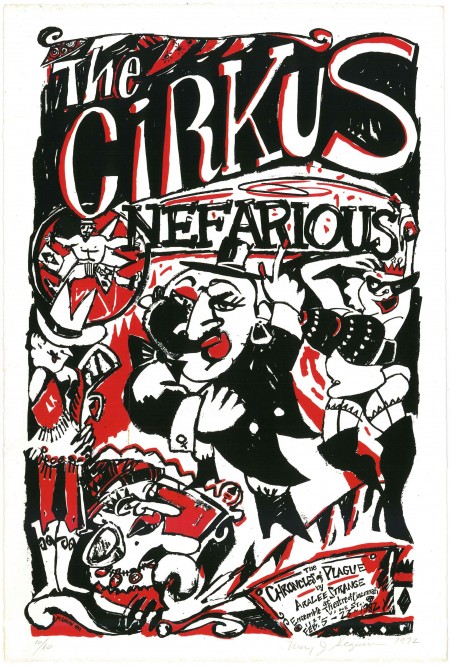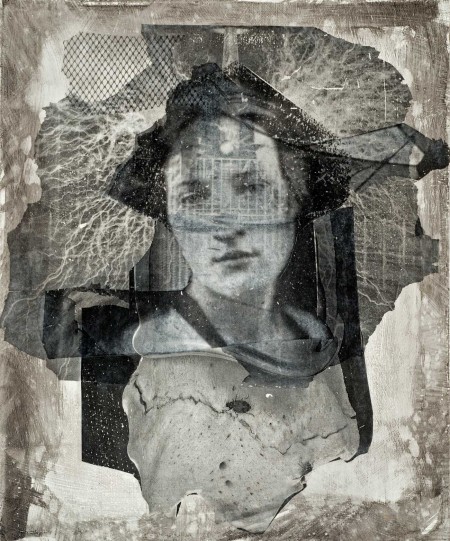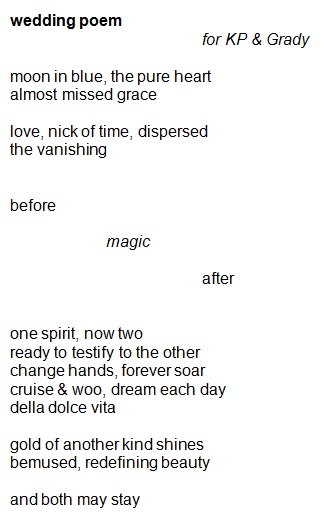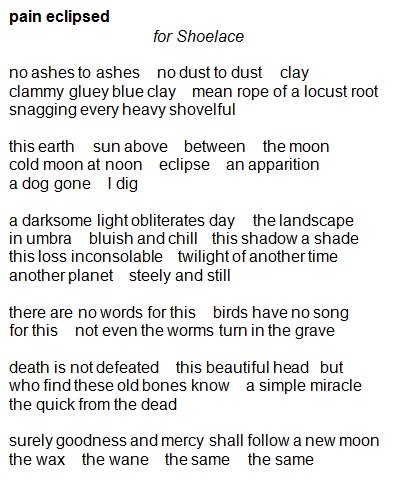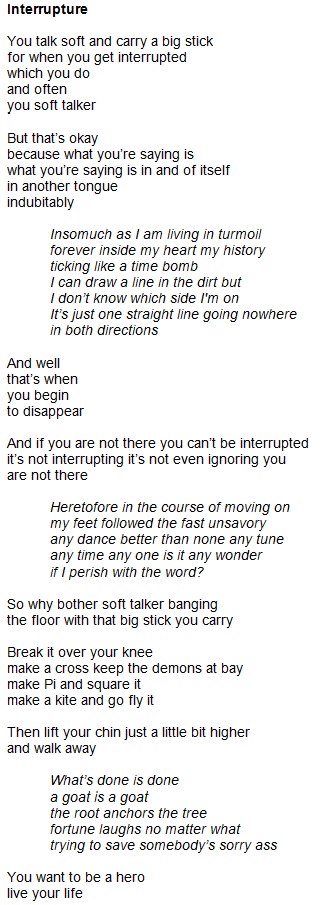Words and Images For A Better World: Aralee STRANGE (1943-2013), Literary Artist, and her Visual Artist Friends
Aralee Strange, a poet and playwright, was born December 5, 1943, in Birmingham, Alabama. After living and working in Atlanta, GA, Cambridge, MA, and New York City, NY, she settled for more than twenty years in Cincinnati, OH. In March 2007, she moved to Athens, GA, and lived there until her passing June 2013, close to her 70th birthday.
Strange’s body of work includes Etta Stone: A Film for Radio (1990), which she wrote, produced and edited at WGUC, Cincinnati – it aired nationally on NPR stations and was included in WGBH’s Arts&Ideas series; dr. pain on main (1991), a play based on her series of poems by the same name, commissioned and produced by Cincinnati Playhouse in the Park; The Chronicles of Plague (1992), a play commissioned and produced by Ensemble Theatre of Cincinnati; An Evening at the Sad Cafe (1995), directed scenes from her screenplay This Train, performed at Ensemble Theatre of Cincinnati and at the Carnegie Arts Center, Covington, KY; This Train (1996-2001), a feature film she wrote, directed and edited.
Throughout her life Strange also pioneered several open poetry readings and read regularly at regional venues. Among the many awards and fellowships she received were The MacDowell Colony, the Kentucky Foundation for Women, the City of Cincinnati, the Cincinnati Fine Arts Fund, and the Ohio Arts Council.
The last reading series Strange founded was Athens Word of Mouth, in Athens, GA; it continues to this day. A year ago, Cincinnati poets Mark Flanigan and Jim Palmarini duplicated the series in Cincinnati, OH, (Cincinnati Word of Mouth), in her honor.
When I asked visual artist, musician and music composer, Jay Bolotin, a very close friend of Strange, whether he would consider being the visual artist featured side by side with her, as a poet, in this monthly column “Art for a Better World” of Aeqai, his first reaction was, “Can we make an exception for Aralee?” to which he very quickly added “Well, with Aralee, one artist is just not enough.” Rather than featuring only his own work, Bolotin offered instead to gather and present visual art works by artists who were close to Strange, who connected with her, who were able to capture her and her spirit.
In fact, Strange was able, and quite effortlessly, to inspire extraordinary work in others, and there were more than a few paintings done by some great painters with her visage gazing out. Also sometimes she would need an image for a broadside, for a poster of a play or a poetry reading, and wonderful artists would appear, moved by her or by her work.
In tracking down some of the following images for this column, Bolotin got in touch with the exceptional painter/field recordist, Art Rosenbaum, who used Strange’s image in his large painting “Strainer.” Rosenbaum’s note back to him sums up very well her role and influence: “I saw Aralee as a kind of visionary [standing] at the edge of the strainer [the frame].”
Bolotin plans to involve, in the near future, some of the featured artists and other talented ones who knew Strange, in a portfolio of broadsides of her series of poems, Peach Mountain Psalms.
Poet and Writer Mark Flanigan, also a dear friend of Strange, was instrumental in selecting and providing introductory notes to her poems that follow.
Strange’s poem, “prayer (a poem in a painting),” speaks to the special friendship, artistic and otherwise, that existed between her and Jay Bolotin. It refers also to the reciprocal relationship that she always found between the written word and visual art.
The poem, “In the Beginning,” is an excerpt from Strange’s play, “The Chronicles of Plague.” It is one of two excerpts from the play that she included in the poetry manuscript she collated in 2007. This manuscript, tentatively titled “The Road Itself,” remains unpublished but is in the process of being expanded to include her later works, with an eye to future publication. All the poems here included are taken from it.
A few days before the first Word of Mouth in Athens, GA, was to take place—one in which Strange invited Cincinnati poet Mark Flanigan to be the feature reader—Flanigan’s mother, who was convalescing in nearby Conyers, passed away suddenly. Flanigan performed nonetheless. That evening Strange dedicated her reading of the following poem, “Blood of My Pen,” to him. Her attempt at “surrounding him” did work for him.
When Flanigan later discovered that Strange had also sent the same poem to her good friend, Michelle Red Elk, with whom she planned on collaborating on a “drawing-poem” and “poem-drawing” project, he knew then that she indeed held “Blood of My Pen” in high regard. Michelle Red Elk’s drawing “dog snake raven” hung on the wall above the headboard of the bed in which Strange died.
In the 1980’s, before Cincinnati’s Main Street emerged as the well-lit destination that it has become in recent years, its affordable spaces housed many artists. Jim Wainscott and Strange were two such peers working in different disciplines while documenting their shared environs. In 1995, Cincinnati’s Clay Street Press showcased both of their work simultaneously, superimposing Wainscott’s sketches of the area and its denizens with Strange’s series of poems, “dr. pain on main.” Here Wainscott’s painting of Strange is followed by her poem, “pain eclipsed,” which is excerpted from the aforementioned series.
The poem “Interrupture” was chosen to accompany Art Rosenbaum’s painting Strainer because of Rosenbaum’s earlier quote to Jay Bolotin: “I saw Aralee as a kind of visionary [standing] at the edge of the strainer [the frame].” In the poem, it is almost as if Strange is attempting to center herself away from said edge.
One of Strange’s favorite later pursuits was what she called making “cut ups,” wherein she poured over magazines and constructed poems out of the words that she cut out of them, effectively making visual art pieces herself, pieces that accented the joyful relationship she had with language and that was ever-present in her written work.
Commenting on poetry in general, she once stated: “Poetry is something unto itself, and the words become unto themselves in that poem. Poetry is a way of honoring each word. That’s important to me, because language is all we’ve got. If it turns into a big gobbledygook, then we can’t talk to each other. Language is galloping ahead of us, and it’s the poet’s job to grab it.”
(Quoted by Kathy Wilson in the CityBeat cover story: “The Secret Language of the Modern Age: Poets reconstruct the poetry of meaning” published April 20, 2005)
(Note: Many thanks to Jay Bolotin and Mark Flanigan for their major contribution to this column featuring Aralee Strange and her Visual Artist Friends; without them it would not have been possible.)
–Saad Ghosn

